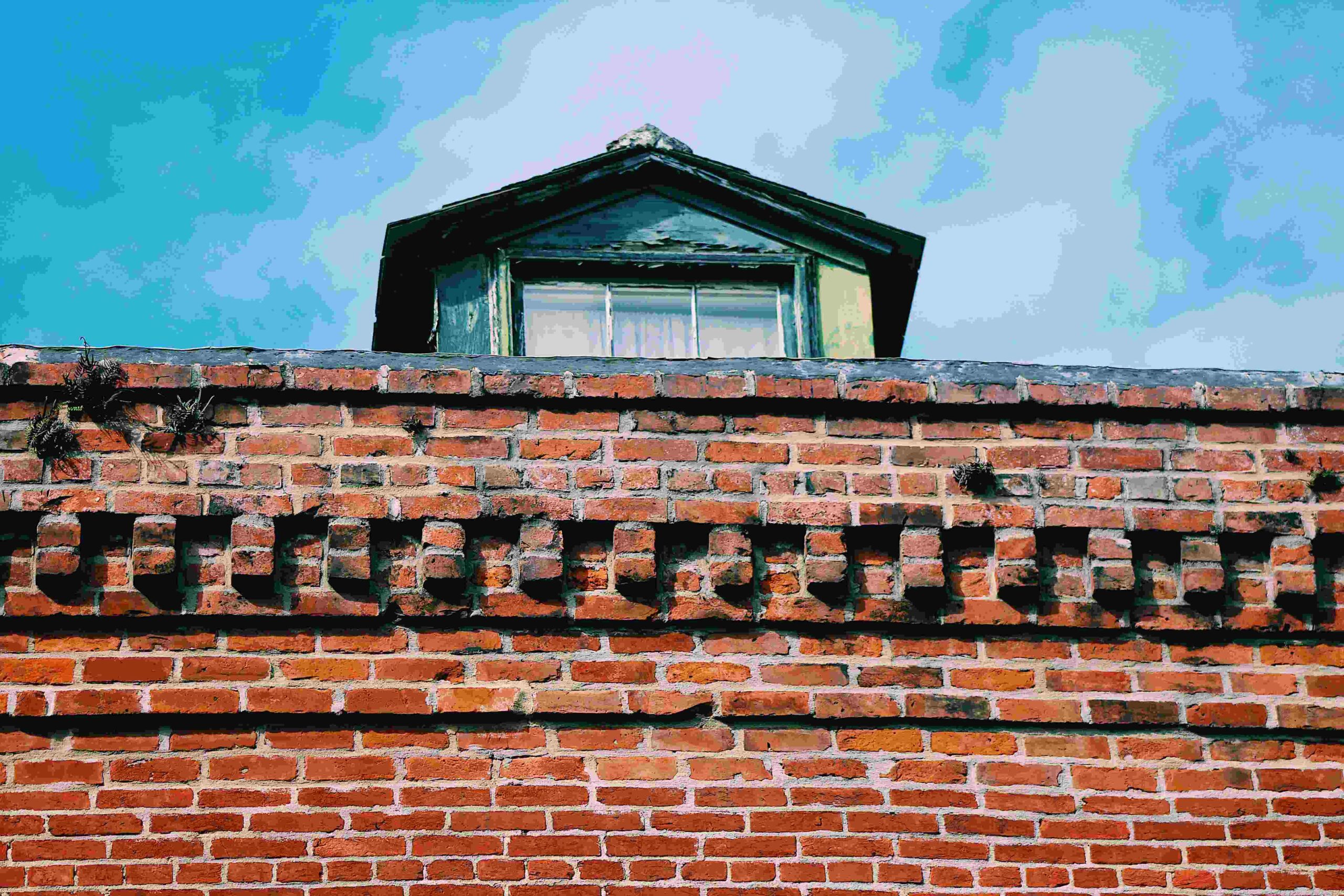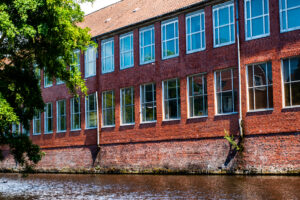The Art of Masonry Restoration
Masonry restoration is more than just fixing damaged bricks; it’s about preserving the historical and aesthetic value of your property. It’s about honoring the craftsmanship of the past while ensuring your walls stand strong for the future.
Masonry restoration encompasses a wide range of techniques and processes that aim to restore the integrity and appearance of brick walls. It involves a combination of cleaning, repairing, repointing, and enhancing the brickwork to achieve the desired results.
Signs of Brick Deterioration
Before we dive into the restoration process, it’s essential to recognize the signs of brick deterioration:
- Cracks: Small cracks can lead to more extensive damage if left unattended. They can be caused by various factors, including settling, temperature fluctuations, and moisture infiltration.
- Spalling: When the brick surface flakes or chips due to moisture and freeze-thaw cycles. Spalling is often a result of water penetration into the bricks, causing them to expand and contract, leading to surface damage.
- Efflorescence: The appearance of white, powdery deposits on the brick surface, indicating moisture issues. Efflorescence occurs when soluble salts within the bricks are brought to the surface by water, leaving behind a residue as the water evaporates.
Early detection of these signs is crucial for effective restoration. Regular inspections of your brick walls can help identify problems before they worsen.
Brick Cleaning and Preparation
Cleaning Methods
Cleaning your exterior brick walls is the first step in the restoration process. Depending on the level of dirt and stains, you can use various methods:
- Pressure Washing: Ideal for removing surface grime and mildew. Pressure washing uses high-pressure water to dislodge dirt and contaminants from the brick surface. It’s essential to adjust the pressure carefully to avoid damaging the bricks or mortar.
- Chemical Cleaning: Effective for deep cleaning, but it requires caution and protective gear. Chemical cleaning involves the use of specialized cleaning solutions to break down stubborn stains and deposits on the bricks. Safety precautions, including wearing protective eyewear and gloves, are essential when using chemicals.
The choice of cleaning method depends on the condition of your bricks and the type of contaminants present. Professional masonry restoration experts can assess your specific needs and recommend the most suitable approach.
Repairing Damaged Brickwork
Different types of brick damage require specific repair techniques:
- Crack Repair: Fill cracks with mortar or epoxy to prevent further damage. Cracks in bricks can compromise their structural integrity and allow moisture to infiltrate. Repairing cracks promptly helps maintain the integrity of the wall.
- Spalling Repair: Remove damaged areas and replace with matching bricks. Spalling is a more severe form of brick damage that requires the removal and replacement of the affected bricks. This ensures the structural stability of the wall while preserving its appearance.
- Efflorescence Treatment: Identify the source of moisture and address it to prevent further efflorescence. Efflorescence is often a symptom of underlying moisture issues. To treat efflorescence, it’s crucial to identify and rectify the source of moisture, whether it’s a leak or inadequate drainage.
Matching the right brick type and color is essential for seamless repairs. Experienced masonry restoration professionals have access to a wide range of brick options to ensure a perfect match.
Mortar Pointing and Repointing
The mortar between your bricks plays a crucial role in the stability of your walls. Over time, mortar can deteriorate, leading to weakened brickwork. Mortar pointing and repointing involve removing deteriorated mortar and replacing it with fresh mortar.
Proper repointing not only strengthens your walls but also enhances their appearance. The steps involved in mortar pointing and repointing include:
- Assessment: A thorough examination of the existing mortar to determine its condition and identify areas in need of repointing.
- Mortar Removal: Careful removal of deteriorated mortar using specialized tools without causing damage to the surrounding bricks.
- Mixing Fresh Mortar: Preparing a mortar mix that matches the composition and color of the existing mortar.
- Repointing: Carefully filling the joints between bricks with the fresh mortar. This process requires skill and precision to achieve a uniform and aesthetically pleasing finish.
- Curing: Allowing the fresh mortar to cure properly to achieve the desired strength.
Repointing not only improves the structural integrity of your walls but also enhances their appearance by providing a clean and uniform finish.
Enhancing Brick Color and Finish
If your bricks have lost their luster, you have options:
- Brick Staining: Change the color of your bricks while retaining their natural texture. Brick staining involves applying a specialized stain to the surface of the bricks, altering their color while allowing the natural texture and character of the bricks to show through. This is an excellent option if you want to update the appearance of your brickwork while preserving its original texture.
- Brick Painting: Apply paint for a new look, but remember that painted bricks may require maintenance. Painting bricks provides a uniform and clean appearance, allowing you to choose from a wide range of colors. However, it’s important to note that once bricks are painted, they may require periodic maintenance, including repainting, to keep them looking their best.
Choose colors that complement your property’s style and the surrounding environment. Professional masonry restoration experts can provide guidance on color selection to achieve the desired aesthetic effect.
Sealing and Waterproofing
Prevent future damage by sealing your brick walls. Sealants and waterproofing protect against moisture infiltration, ensuring your walls remain strong and beautiful for years to come.
Here are key considerations for sealing and waterproofing your brickwork:
- Types of Sealants: There are various sealant options available, including penetrating sealants that seep into the brick’s pores and film-forming sealants that create a protective layer on the surface. The choice of sealant depends on your specific needs and preferences.
- Waterproofing: In addition to sealing, waterproofing measures such as applying a water-repelling coating can further enhance the moisture resistance of your brick walls.
- Professional Application: It’s highly recommended to have sealants and waterproofing applied by experienced professionals to ensure proper coverage and effectiveness.
Investing in high-quality sealants and waterproofing solutions can significantly extend the lifespan of your brick walls and reduce the risk of future damage.
Preservation and Maintenance Tips
To keep your brick walls looking their best, follow these maintenance tips:
- Regular Cleaning: Clean your brick walls at least once a year to remove dirt, grime, and mildew. Regular cleaning helps prevent the buildup of contaminants that can damage the brick surface over time.
- Seasonal Considerations: Address weather-related issues promptly. In regions with cold winters, it’s essential to inspect your brickwork after the winter season to identify any damage caused by freeze-thaw cycles.
- Protection: Use proper drainage and landscaping to divert water away from your walls. Ensure that gutters and downspouts are in good working condition to prevent water from cascading onto your brickwork during heavy rain.
By incorporating these maintenance practices into your routine, you can preserve the beauty and structural integrity of your brick walls.
DIY vs. Professional Restoration
While some small repairs can be tackled as DIY projects, larger restoration efforts are best left to professionals like Bricklands Inc. Professional restoration ensures safety, quality, and lasting results.
When considering whether to embark on a DIY restoration project or hire professionals, keep the following points in mind:
- Scope of Work: Evaluate the extent of the restoration needed. Small cracks or minor cleaning may be suitable for DIY enthusiasts, but larger-scale projects involving structural repairs or extensive repointing are best handled by experts.
- Expertise and Experience: Masonry restoration requires specialized knowledge and experience. Professionals have the training and equipment needed to perform complex tasks effectively.
- Safety: Working with bricks and mortar can be physically demanding and potentially hazardous. Professionals are well-versed in safety protocols to protect themselves and your property.
- Long-Term Results: Professional restoration typically yields superior and longer-lasting results. When you invest in professional services, you ensure that the work is completed to the highest standards.
Before deciding to tackle a restoration project on your own, consult with masonry restoration experts to assess the feasibility and complexity of the task. They can provide guidance on the best approach to achieve your desired outcomes.
Cost Considerations
The cost of masonry restoration can vary depending on the extent of the damage and the services required. Factors that influence the cost include:
- Labor: The amount of labor required for cleaning, repairs, and restoration.
- Materials: The cost of bricks, mortar, sealants, and other materials used in the project.
- Project Size: The size and scale of the restoration project, including the number of bricks involved.
- Complexity: The complexity of the repairs, such as structural issues or extensive repointing.
- Location: Regional factors can affect pricing, including labor rates and material availability.
It’s essential to budget accordingly and consult with experts for accurate estimates. While professional restoration may seem like an upfront investment, it can save you money in the long run by preventing further damage and preserving the value of your property.
Frequently Asked Questions (FAQs)
It’s recommended to clean your brick walls at least once a year to remove surface dirt and prevent stains. However, more frequent cleaning may be necessary in areas with high pollution or heavy rainfall.
Yes, you can change the color of your bricks through staining or painting. Brick staining allows you to alter the color while retaining the natural texture, while brick painting provides a uniform and solid-colored appearance.
The cost of masonry restoration varies based on the scope of work. While some projects may be relatively affordable, extensive restoration involving structural repairs can be more costly. However, investing in restoration can prevent further damage and add long-term value to your property.
Look for signs of deterioration, such as cracks, spalling, or efflorescence. If you notice these issues, it’s advisable to consult with masonry restoration experts for a thorough assessment and recommendations.
Yes, professionals can source replacement bricks that closely match the color and texture of your existing bricks. This ensures a seamless and aesthetically pleasing repair.
The duration of a masonry restoration project depends on its complexity and size. Small repairs may take a few days, while extensive restoration of larger structures can take weeks or longer. Your restoration experts can provide a timeline based on your specific project.
Conclusion
Your brick walls are more than just a structural element; they’re a reflection of your property’s character and history. Bricklands LLC is here to help you preserve and enhance their beauty. Reach out to us for consultation and experience the transformation of your exterior walls.
References:
National Park Service (NPS) - Preservation Briefs
- Website: https://www.nps.gov/tps/how-to-preserve/briefs.htm
- The National Park Service provides a collection of Preservation Briefs that offer guidance on various historic preservation topics, including brick masonry restoration. These briefs contain valuable information and best practices.
U.S. Environmental Protection Agency (EPA) - Lead Renovation, Repair, and Painting Program
- Website: https://www.epa.gov/lead
- The EPA’s Lead Renovation, Repair, and Painting Program provides information on safe practices for renovation and repair work that may involve lead-based paint. Brick restoration often involves addressing old painted surfaces, and this program offers guidance on handling such projects safely.
U.S. General Services Administration (GSA) - Historic Preservation
- Website: https://www.gsa.gov/real-estate/historic-preservation
- The U.S. General Services Administration offers resources and guidelines related to historic preservation, including information on restoring and maintaining historic structures, some of which may include brickwork. This resource can be particularly helpful for those involved in government-owned historic buildings or interested in federal guidelines on restoration.








